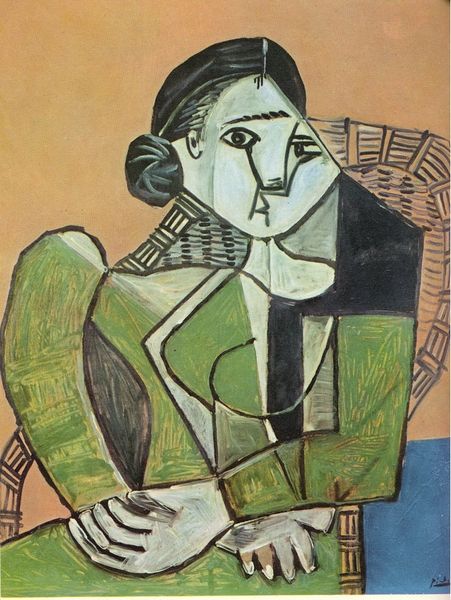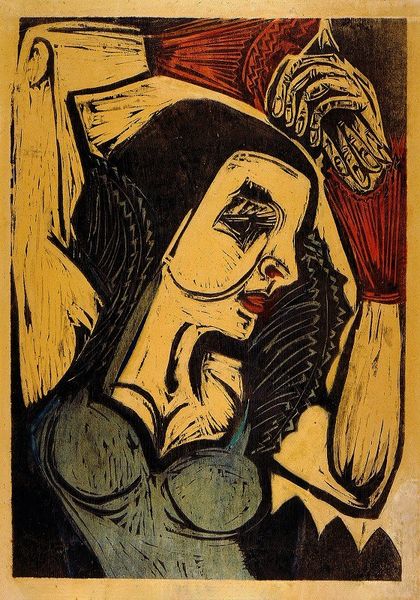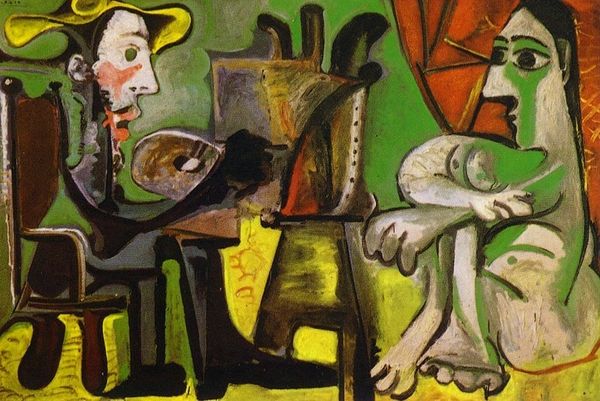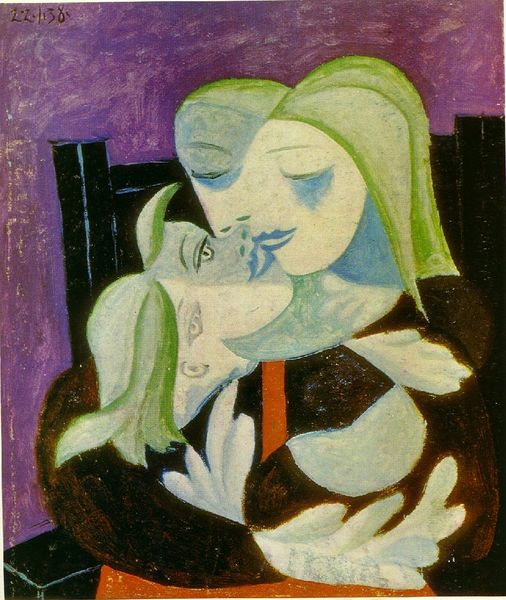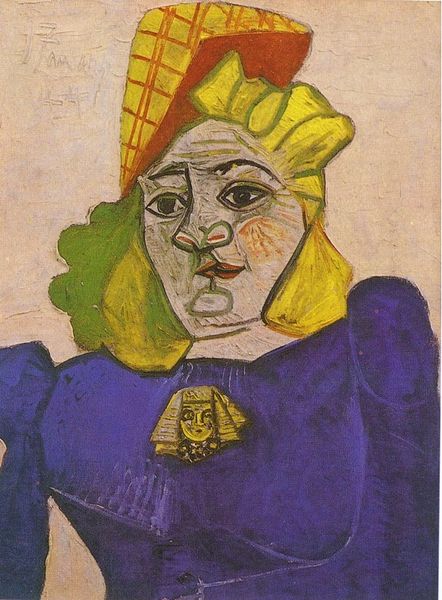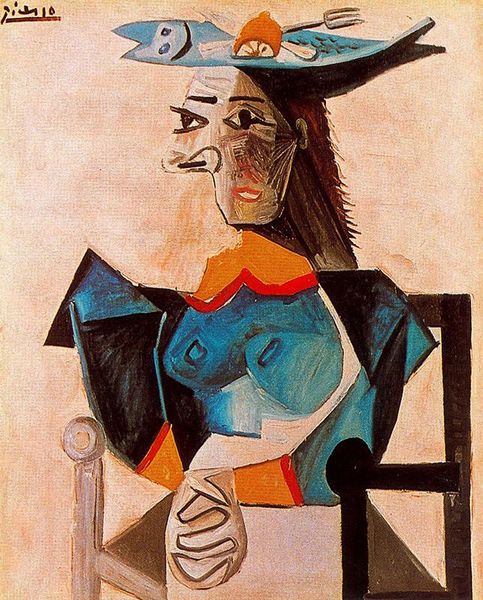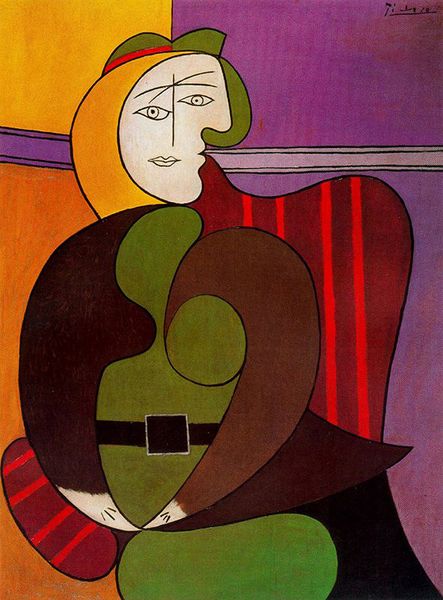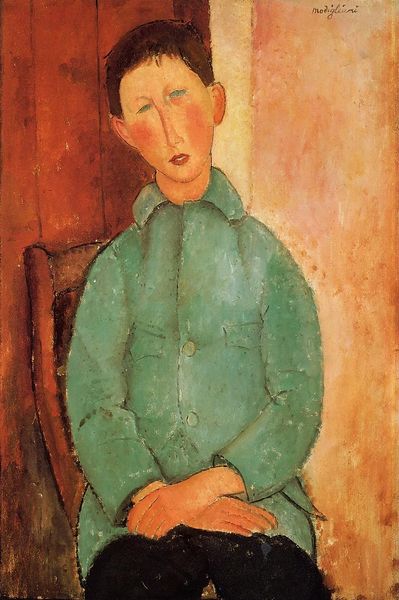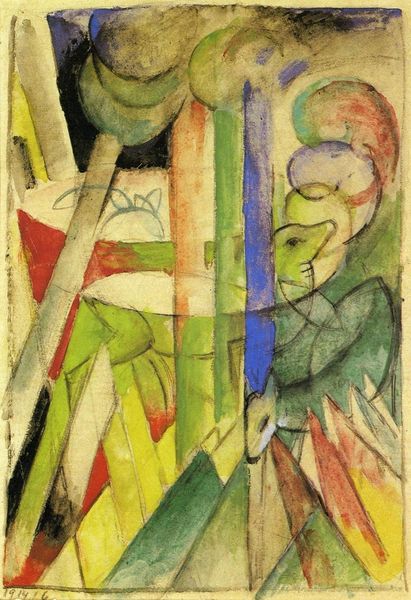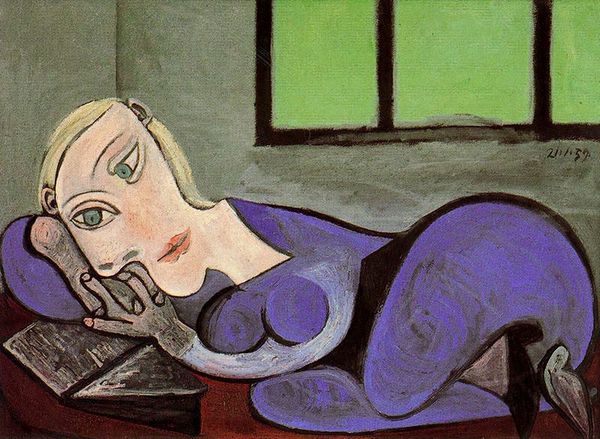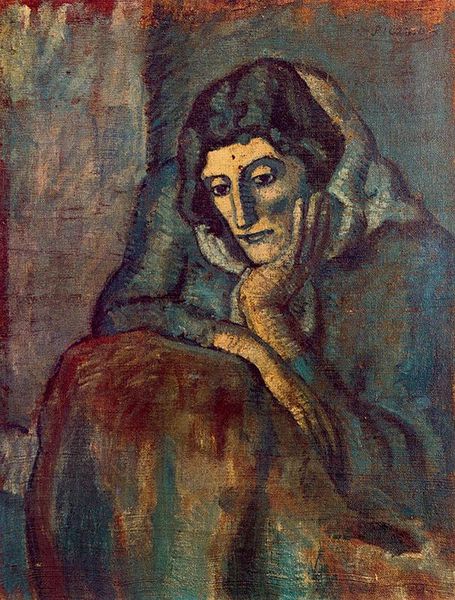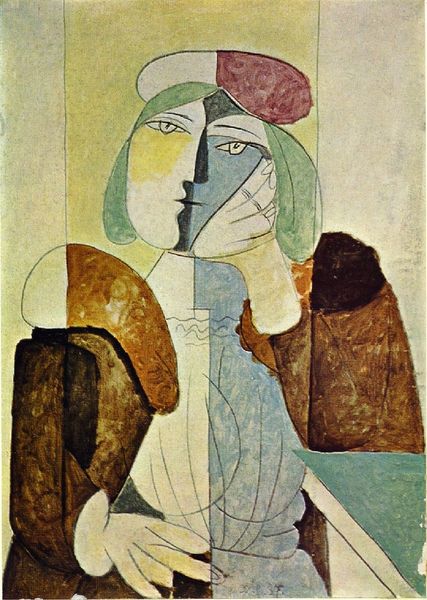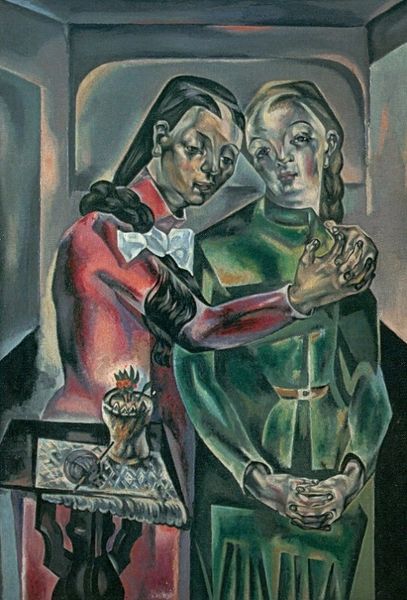
painting, oil-paint, acrylic-paint
#
portrait
#
cubism
#
abstract painting
#
painting
#
oil-paint
#
acrylic-paint
#
figuration
#
acrylic on canvas
#
portrait art
#
modernism
Dimensions: 41 x 33 cm
Copyright: Pablo Picasso,Fair Use
Editor: Here we have Picasso's "Portrait of a Woman," created in 1936 using oil and acrylic paint. It's such an intriguing portrait! What really strikes me is the almost dreamlike state of the subject, the closed eyes, and the distorted features. How do you interpret this work? Curator: This portrait is pregnant with meaning, a layered exploration of the feminine mystique through the language of Cubism. Picasso isn't simply representing a woman; he's delving into the psychological and emotional complexities of female identity. Look at the disjointed features, the fragmented planes of her face. It’s less about physical appearance and more about capturing the multifaceted nature of her inner world, a world perhaps hidden even from herself. Do you notice anything else in the composition that speaks to you? Editor: I hadn’t considered the inner world aspect so directly, but now that you mention it, the mirror behind her could represent a reflection of her consciousness? The colours seem to also evoke different emotional layers. Curator: Exactly! The mirror acts as a portal, inviting us to contemplate what lies beneath the surface, both within the woman and within ourselves. The use of colour, while seemingly arbitrary, creates a mood that’s both intimate and slightly unsettling. The redness of the table, suggesting passion, contrasting with the cooler greens that cloak her. What do those juxtapositions suggest to you? Editor: It is fascinating how he uses this technique to capture not just a likeness but perhaps her shifting emotional state. It makes you wonder what was on her mind. Curator: Indeed, and this interplay of form and symbolism ensures that “Portrait of a Woman” continues to resonate deeply with audiences, even decades later. It shows how Picasso viewed her and his relationship with her and her femininity. It's not just a portrait; it's a window into the soul, a symbolic journey. Editor: Thank you for unveiling this work in its many layered forms. I'll never look at it the same way!
Comments
No comments
Be the first to comment and join the conversation on the ultimate creative platform.
